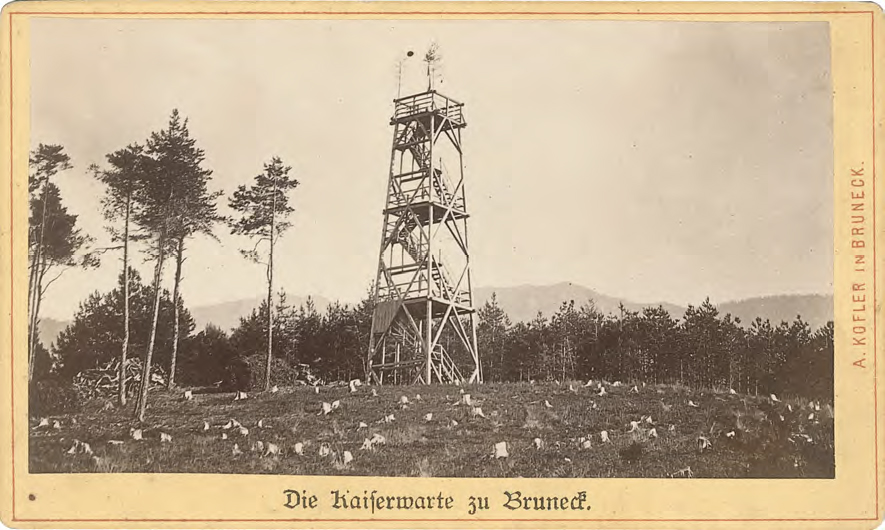In 1880 the town improvement society came up with a plan to build a viewing tower on the highest point of the Kühbergl, which was known as the Fuchskofl. At that time, viewing platforms could be found throughout the Alpine region. From the Fuchskofl there was an incomparable panoramic view. The tower was named “Kaiserwarte zu Bruneck” or Bruneck Emperor’s Observation Point.
In 1880 the town improvement society came up with a plan to build a viewing tower on the highest point of the Kühbergl, which was known as the Fuchskofl. At that time, viewing platforms could be found throughout the Alpine region. From the Fuchskofl there was an incomparable panoramic view. The tower was named “Kaiserwarte zu Bruneck” or Bruneck Emperor’s Observation Point.
It was 20 metres tall. At its foot, the wooden structure formed a square, one side of which measured five metres. The side of the topmost of its three platforms was 3 metres long. To provide unobstructed views, trees were felled all around.
The opening of Bruneck’s Kaiserwarte took place in July 1880. In the first month alone the viewing tower welcomed 500 visitors. In 1886, the Austrian Emperor, Franz Joseph I, inspected the attraction that had been named after him. However, due to the strong winds, he did not scale the tower.
To commemorate the visit of Franz Joseph I, a memorial stone was put in place next to the tower. On the occasion of the ceremonial unveiling, Johann Georg Mahl, Bruneck’s mayor and founder of the town improvement society stated that “His majesty rested here and surveyed the wonderful panorama of Bruneck with pleasure.”
 Orte entdecken
Orte entdecken

